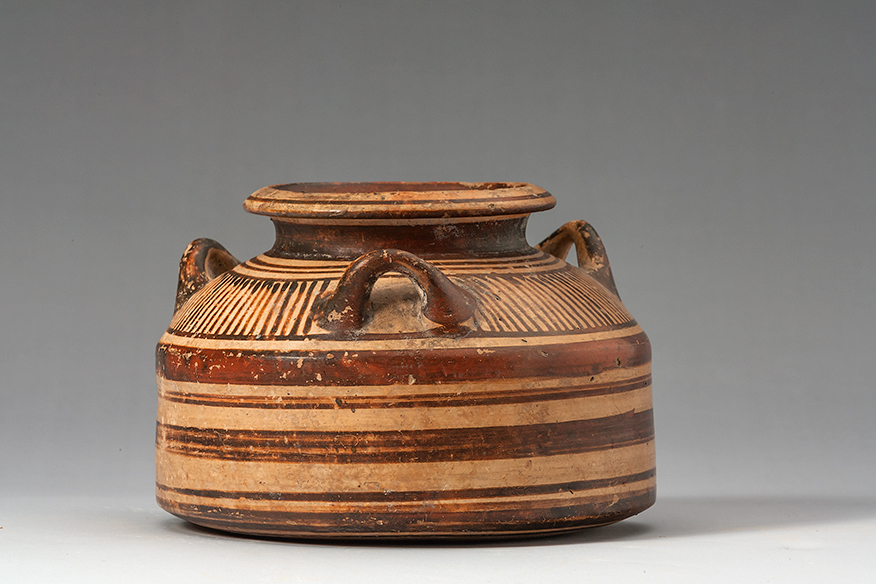Acquisition number: 1996.04
Mycenaean Straight-sided Alabastron. Pale brown-buff clay, smoothly finished. Straight walls, curved shoulder, angled everted lip. There are three raised horizontal handles of roughly circular section rising from the shoulder. The floor of the vessel is curved, with a slight depression in the centre.
Title: Straight-sided Alabastron - 1996.04
Acquisition number: 1996.04
Author or editor: J.R. Green
Culture or period: Mycenaean Late Helladic A2.
Date: 1350 - 1300 BC.
Material: Clay - Terracotta
Object type: Vessels - Alabastron
Dimensions: 135mm (w) × 93mm (h)
Origin region or location: Greece
Origin city: Argolid
Display case or on loan: 1
Keywords: Bronze Age, Late Helladic, Mycenaean, Argolid
Charles Ede Ltd (London), Mycenaean Pottery and Terracottas II (May 1996) no. 25b (not illustrated). P.A. Mountjoy, Mycenaean Pottery: An Introduction (Oxford, 1993).
1996.04
Straight-sided Alabastron
Purchased. Max. ht 9.3cm; diam. 13.5cm.
Pale brown-buff clay, smoothly finished. Straight walls, curved shoulder, angled everted lip. There are three raised horizontal handles of roughly circular section rising from the shoulder. The floor of the vessel is curved, with a slight depression in the centre.
Somewhat lustrous red- to dark-brown paint, streaky in places. The lower face of the lip is painted solid; there is a line on the upper lip towards the edge and a further line on the underside of the edge. A band is painted around the neck, three lines on the shoulder, then oblique strokes bounded by a line below. The handles have thick bands over their outer faces. On the wall is a series of horizontal bands. The underside has a line near the edge, then there are four concentric circles and a central dot. No wash inside.
Late Helladic IIIA2; second half of the 14th century BC. Doubtless manufactured in the Argolid. Mountjoy 76 no. 160 is a close parallel.
Charles Ede Ltd (London), Mycenaean Pottery and Terracottas II (May 1996) no. 25b (not illustrated). P.A. Mountjoy, Mycenaean Pottery: An Introduction (Oxford, 1993).
